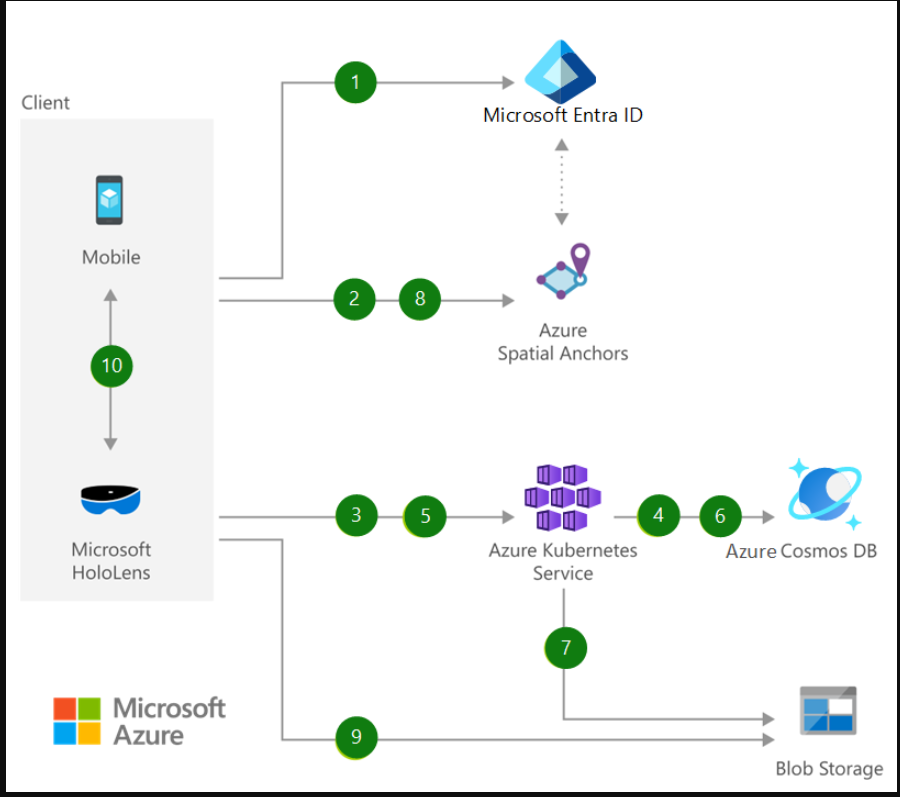category
This article describes a solution idea. Your cloud architect can use this guidance to help visualize the major components for a typical implementation of this architecture. Use this article as a starting point to design a well-architected solution that aligns with your workload's specific requirements.
This article describes how you can use a mixed reality scenario to enable clients, designers, and onsite engineers to easily share and review designs as 3D holograms in the context of their environment.
Architecture

Download an SVG of this architecture.
Dataflow
- Users of the client application authenticate using their Microsoft Entra credentials from HoloLens or a mobile device.
- Device 1 creates an anchor using Azure Spatial Anchors and gets back an anchor ID.
- Device 1 sends the anchor ID to the app's web service to create a collaboration session. It also specifies which hologram is to be displayed via its ID in Azure Blob storage.
- Session information, including a 6-digit code to join the session, is stored in Azure Cosmos DB. That code is returned to the client, allowing the user of that device to invite others to join.
- Device 2 connects to the app's web service and enters the code to join the session (displayed on Device 1).
- The web service retrieves the anchor ID for the session and the ID of the hologram associated to that session from Azure Cosmos DB.
- The web service retrieves a SAS key to access the hologram associated to the session from Blob storage. It then returns the anchor ID and SAS key to Device 2.
- Device 2 queries Azure Spatial Anchors to get coordinates for the anchor ID retrieved in step 6.
- Device 2 fetches the hologram from Blob storage using the SAS key obtained from the app service.
- Device 1 and Device 2 exchange state information over a peer-to-peer networking channel (or through a service relay of your choice).
Components
- Microsoft Entra ID: Synchronize on-premises directories and enable single sign-on
- Blob Storage: REST-based object storage for unstructured data
- Azure Cosmos DB: Globally distributed, multi-model database for any scale
Scenario details
Businesses and teams across industries have to spend time and money on design reviews. 2D images lose essential detail and context, and physical prototypes are extremely expensive. With this mixed reality scenario, clients, designers, and onsite engineers can easily share and review designs as 3D holograms in the context of their environment, accelerating design decisions and reducing time to market.
Potential use cases
- Remote assistance to problem-solve in real-time
- Tailored, immersive experiences with 3D and the IIoT
- Knowledge-based work instructions to capture and scale expertise
Next steps
Related resources
- 登录 发表评论
- 6 次浏览
最新内容
- 2 weeks 3 days ago
- 2 weeks 3 days ago
- 1 month 1 week ago
- 1 month 1 week ago
- 1 month 1 week ago
- 1 month 1 week ago
- 1 month 1 week ago
- 1 month 1 week ago
- 1 month 1 week ago
- 1 month 1 week ago